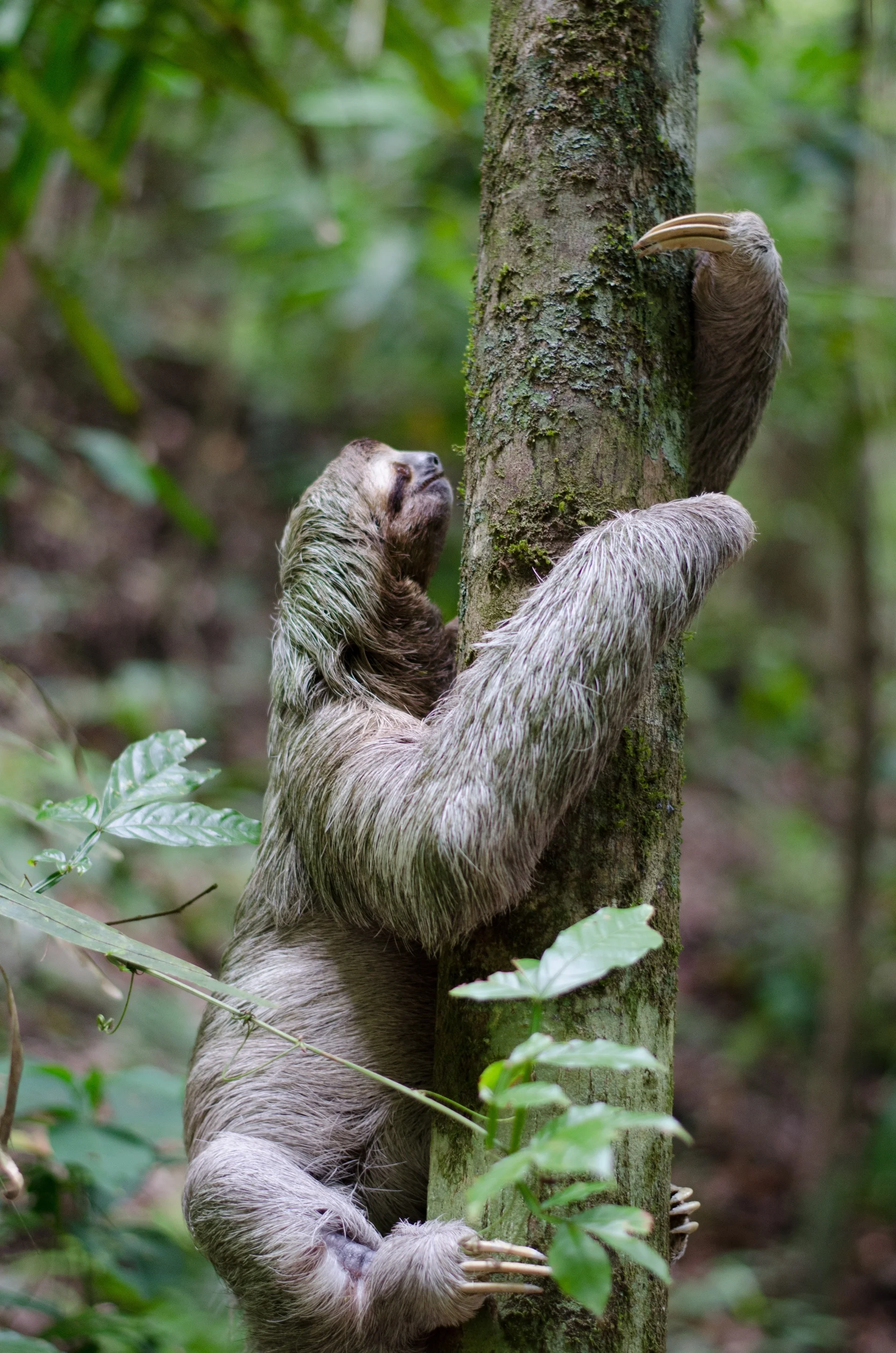Respect the Sloths!
We all know how cute, adorable, and lovable sloths are! It would be easy to want to treat them like a teddy bear, but sloths are very independent creatures who deserve respect. We are able to show respect when we take the time to know what is best for the sloth to thrive in its natural environment.
Because sloths are slow, it might be easy to catch up to one in the wild or in tourist areas. But that doesn’t mean it’s a good thing to do. If a sloth gets scared, it might freeze. If you notice that a sloth is reacting to you, give it some more space. As cute and friendly-looking as sloths are, they are not the same as domestic animals who are used to continual human contact. And even cats want their own space sometimes! Sloths are highly solitary, not even spending a lot of time with other sloths. So please keep your distance and respect them. Human contact can be extremely stressful to a sloth.
This also means not falling for tourist traps that have you pay to hold a sloth or take a picture with a sloth. If you want to visit sloths, make sure you do your research and find a place that is devoted to the care and respect of sloths, and which takes good care of sloths who cannot otherwise live in the wild. Read more about respecting sloths in this article by The Sloth Institute of Costa Rica’s co-founder Sam Trull.












